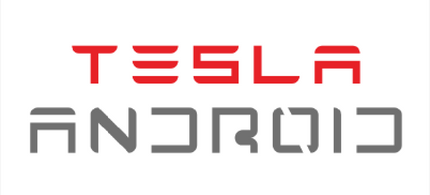The 2025.44.1 update is now live for all users — and it’s not just another incremental release. Out of the 27 builds we’ve shipped so far, this one stands out as a true milestone. We believe it has the potential to redefine how you interact with your Tesla’s infotainment system.
Why? Because it’s simply that much better. Let’s take a closer look.
H.264 Virtual Display (a.k.a. The Fast One)
We’ve completely rewritten the most critical component of Tesla Android — the video streaming engine — to use H.264 instead of MJPEG.

Thanks to WebCodecs and WebGPU support in the Tesla browser, along with hardware-accelerated encoding on the Raspberry Pi platform, the new video backend delivers dramatic improvements in both performance and bandwidth efficiency.
The result? A smoother, faster, and more responsive experience — especially on Ryzen-powered Teslas. This marks a major step forward in our long-term goal of delivering a truly fluid 60Hz infotainment experience without having to directly connect with the display in your car. It voids your warranty and can lead to issues with insurance.
See it in action! We took our 2025 Model Y for a test drive to showcase seamless video playback in motion.
Lossless Browser Audio (That Runs in the Background)
Until now, browser changes in Tesla’s system prevented us from routing audio through our frontend. With 2025.44.1, that limitation is finally gone.
Your Tesla Android device can now play uncompressed 48kHz audio, enabling lossless streaming from your favorite platforms such as Apple Music. And since this happens through a native Android client, you get all the features you’d expect — including offline playback, live subtitles, and crossfade.

Even better, Tesla Android now supports background operation just like Tesla’s built-in streaming apps. You can minimize the app, interact with the car, and continue enjoying your music without interruption — especially useful for drivers using Full Self-Driving (Supervised).

Our new audio pipeline is built on robust foundations: Media Source API for seamless playback and FFmpeg for ultra-low latency transcoding from PCM to FLAC.
Is it really that good? Absolutely. Check out our unedited demo:
Rear Display Support
Tesla Android now supports all screens across the Model 3, Model Y, and Cybertruck.

You can activate the secondary display through the YouTube app — just head over to our channel at: youtube.com/@teslaandroid-com
Faster Boot Times
Our Compute Module 4-based hardware now boots in under 30 seconds, thanks to deep platform optimisations that take full advantage of NVMe storage. Faster startups mean you’ll be up and running before your Tesla even finishes warming up your steering wheel (or yoke!).
SoC Overclock (Compute Module 4 Only)
Because we fully control our hardware stack, we’ve been able to fine-tune the SoC performance profile to boost both CPU and GPU clock speeds.
Our actively cooled hardware allows for safe and stable overclocking — with additional headroom left for future updates. Expect even more performance gains down the road.
Additional Improvements
This release also includes updates to the Android platform, the Flutter frontend framework, and a range of bug fixes and refinements that have been in development for months.
Together, they make 2025.44.1 one of the most refined, stable, and feature-rich versions of Tesla Android yet.
How to Update
You can download Tesla Android 2025.44.1 directly from our Github or install it via OTA update on your device.
This is one of the most important updates in Tesla Android’s history — and it’s only the beginning. Expect even more exciting advancements in the coming weeks.
Thank You, Beta Testers
A massive thank-you to our beta testing community for helping us identify and fix issues before release.
Want to join the crew? Visit beta.teslaandroid.com and join our #beta-testers Slack channel to get early access and shape future updates.


